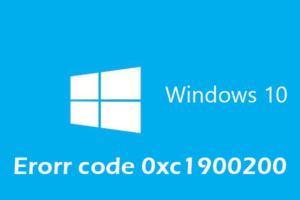-
Table of Contents
Fixing the “Kernel is not Seandroid Enforcing” error made easy.
If you encounter the error message “Kernel is not Seandroid enforcing” on your device, it typically indicates a problem with the device’s software or firmware. This error can occur on Samsung devices and is often associated with failed software updates or modifications. In this guide, we will provide you with steps to fix the “Kernel is not Seandroid enforcing” error.
Understanding the Kernel Is Not Seandroid Enforcing Error
The “Kernel is not Seandroid enforcing” error is a common issue that can occur on Samsung devices. This error message typically appears when users try to boot their device or perform a software update. It can be frustrating and confusing, but understanding the root cause of the problem can help you find a solution.
To begin, it’s important to understand what the kernel is and why it is important in the context of your device. The kernel is the core component of an operating system that acts as a bridge between the hardware and software. It manages system resources, controls device drivers, and provides a foundation for running applications. In the case of Samsung devices, the kernel is responsible for enforcing the Seandroid policy, which is a security feature that protects the device from unauthorized access.
When the “Kernel is not Seandroid enforcing” error occurs, it means that there is an issue with the kernel’s ability to enforce the Seandroid policy. This can happen due to various reasons, such as a corrupted system file, incompatible software, or a failed software update. It’s important to note that this error is not exclusive to Samsung devices and can occur on other Android devices as well.
One possible solution to fix this error is to perform a factory reset on your device. This will erase all data and settings on your device, so it’s crucial to back up your important files before proceeding. To perform a factory reset, go to the Settings menu, select “Backup and Reset,” and choose the option to reset your device to its factory settings. After the reset is complete, your device should boot up without the “Kernel is not Seandroid enforcing” error.
If a factory reset doesn’t resolve the issue, you can try flashing a stock firmware on your device. This involves reinstalling the original firmware that came with your device, which can help fix any software-related issues. To flash a stock firmware, you will need to download the appropriate firmware file for your device model from the official Samsung website. Then, use a tool like Odin to flash the firmware onto your device. This process can be complex and risky, so it’s recommended to follow a detailed guide or seek professional assistance.
In some cases, the “Kernel is not Seandroid enforcing” error may be caused by a hardware issue. If you suspect that this is the case, it’s best to contact Samsung support or visit a certified service center for further assistance. They will be able to diagnose the problem and provide a suitable solution, which may involve repairing or replacing the faulty hardware component.
In conclusion, the “Kernel is not Seandroid enforcing” error can be a frustrating issue to encounter on your Samsung device. Understanding the role of the kernel and the Seandroid policy is crucial in finding a solution. Performing a factory reset or flashing a stock firmware can often resolve the issue, but if the problem persists, it’s best to seek professional help. Remember to always back up your data before attempting any troubleshooting steps to avoid losing important information.
Troubleshooting Steps to Fix the Kernel Is Not Seandroid Enforcing Error
How To Fix The Error Of Kernel Is Not Seandroid Enforcing
The “Kernel Is Not Seandroid Enforcing” error is a common issue that can occur on Samsung devices. This error message typically appears when there is a problem with the device’s security software, specifically the kernel. When this error occurs, it can prevent the device from booting up properly and can be quite frustrating for users. Fortunately, there are several troubleshooting steps that can be taken to fix this error and get your device back up and running smoothly.
One of the first steps to take when encountering the “Kernel Is Not Seandroid Enforcing” error is to perform a soft reset. This can be done by simply holding down the power button until the device restarts. This can often resolve minor software glitches that may be causing the error. If the error persists after a soft reset, the next step is to try booting the device into safe mode.
To boot your Samsung device into safe mode, start by turning off the device completely. Once the device is off, press and hold the power button until the Samsung logo appears on the screen. As soon as the logo appears, release the power button and immediately press and hold the volume down button. Continue holding the volume down button until the device finishes booting up. If successful, the device will display “Safe mode” in the bottom left corner of the screen.
Booting the device into safe mode allows you to troubleshoot the error by disabling any third-party apps that may be causing conflicts with the kernel. If the error does not occur in safe mode, it is likely that a third-party app is the culprit. To identify the problematic app, start by uninstalling any recently installed apps one by one and testing if the error persists after each uninstallation. This process may be time-consuming, but it can help pinpoint the app causing the issue.
If the error still occurs in safe mode or if you are unable to identify the problematic app, the next step is to perform a factory reset. It is important to note that a factory reset will erase all data on your device, so it is crucial to back up any important files before proceeding. To perform a factory reset, go to the Settings menu on your device, select “General Management,” then “Reset,” and finally “Factory data reset.” Follow the on-screen instructions to complete the reset process.
If none of the previous steps have resolved the “Kernel Is Not Seandroid Enforcing” error, it may be necessary to seek professional help. Contacting Samsung support or visiting an authorized service center can provide you with expert assistance in diagnosing and fixing the issue. They may be able to reflash the device’s firmware or replace any faulty hardware components that are causing the error.
In conclusion, encountering the “Kernel Is Not Seandroid Enforcing” error on your Samsung device can be frustrating, but there are several troubleshooting steps that can be taken to resolve the issue. Starting with a soft reset and booting into safe mode can help identify any software conflicts or problematic third-party apps. If these steps do not work, performing a factory reset may be necessary. If all else fails, seeking professional help from Samsung support or an authorized service center is recommended. By following these steps, you can fix the error and get your device back to its normal functioning state.
Common Causes of the Kernel Is Not Seandroid Enforcing Error
The “Kernel is not Seandroid enforcing” error is a common issue that many Android users encounter. This error message typically appears when users try to boot their device or install a custom ROM. It can be frustrating and confusing, but understanding the common causes of this error can help you troubleshoot and fix it.
One of the most common causes of the “Kernel is not Seandroid enforcing” error is a corrupted or incompatible custom ROM. When users try to install a custom ROM that is not compatible with their device or is not properly downloaded, this error message may appear. To fix this issue, you should ensure that you are using a compatible custom ROM and that it is downloaded correctly.
Another common cause of this error is a problem with the device’s bootloader. The bootloader is responsible for loading the operating system on your device. If there is an issue with the bootloader, it can result in the “Kernel is not Seandroid enforcing” error. To fix this issue, you can try to reflash the bootloader or install a new one.
In some cases, the error may be caused by a problem with the device’s firmware. Firmware is the software that is embedded in the hardware of your device and controls its functionality. If the firmware is outdated or corrupted, it can lead to various errors, including the “Kernel is not Seandroid enforcing” error. To fix this issue, you can try to update the firmware of your device.
Additionally, the error may be caused by a problem with the device’s kernel. The kernel is the core component of the operating system that manages the system’s resources and provides a bridge between the hardware and software. If there is an issue with the kernel, it can result in the “Kernel is not Seandroid enforcing” error. To fix this issue, you can try to flash a new kernel or reinstall the existing one.
Furthermore, the error may be caused by a problem with the device’s security settings. The “Kernel is not Seandroid enforcing” error is related to the Seandroid security feature, which is designed to enforce the security policies on your device. If there is a conflict or issue with the security settings, it can trigger this error message. To fix this issue, you can try to reset the security settings or disable any conflicting security features.
In conclusion, the “Kernel is not Seandroid enforcing” error is a common issue that can occur on Android devices. Understanding the common causes of this error, such as a corrupted custom ROM, bootloader or firmware issues, kernel problems, or conflicts with security settings, can help you troubleshoot and fix the issue. By following the appropriate steps, you can resolve the error and get your device back up and running smoothly.
Preventive Measures to Avoid the Kernel Is Not Seandroid Enforcing Error
Preventive Measures to Avoid the Kernel Is Not Seandroid Enforcing Error
The “Kernel is not Seandroid enforcing” error is a common issue that many Android users encounter. This error message typically appears when there is a problem with the device’s security software, specifically the kernel. While it can be frustrating to deal with, there are several preventive measures you can take to avoid this error and ensure the smooth functioning of your Android device.
First and foremost, keeping your device’s software up to date is crucial in preventing the “Kernel is not Seandroid enforcing” error. Manufacturers regularly release software updates that include bug fixes and security patches. By installing these updates, you can ensure that your device’s kernel is functioning properly and is in line with the latest security protocols. To check for updates, go to your device’s settings, navigate to the “Software Update” or “System Update” section, and follow the prompts to install any available updates.
Another preventive measure is to avoid installing apps from untrusted sources. While the Google Play Store is generally a safe place to download apps, there are instances where malicious apps can slip through the cracks. These apps can potentially interfere with your device’s kernel and trigger the “Kernel is not Seandroid enforcing” error. To mitigate this risk, only download apps from reputable sources and be cautious of any suspicious-looking apps or developers.
Regularly scanning your device for malware is also essential in preventing the “Kernel is not Seandroid enforcing” error. Malware can infiltrate your device and cause various issues, including problems with the kernel. To scan your device for malware, consider using a reputable antivirus app from a trusted developer. These apps can detect and remove any malicious software that may be affecting your device’s kernel.
In addition to these preventive measures, it is important to be mindful of the modifications you make to your device. Rooting or jailbreaking your Android device can provide you with additional customization options, but it also opens the door to potential security vulnerabilities. Modifying the kernel or system files without proper knowledge and expertise can lead to errors such as “Kernel is not Seandroid enforcing.” If you are not familiar with the technical aspects of rooting or jailbreaking, it is best to avoid these modifications altogether.
Lastly, regularly backing up your device’s data is a preventive measure that can save you from the frustration of dealing with the “Kernel is not Seandroid enforcing” error. Backing up your data ensures that even if an error occurs, you can easily restore your device to its previous state without losing any important information. Android devices offer various backup options, including cloud storage and local backups. Choose the method that suits your needs and preferences, and make it a habit to back up your data regularly.
In conclusion, the “Kernel is not Seandroid enforcing” error can be avoided by following a few preventive measures. Keeping your device’s software up to date, avoiding untrusted app sources, scanning for malware, being cautious with modifications, and regularly backing up your data are all essential steps in maintaining a secure and error-free Android device. By implementing these measures, you can ensure that your device’s kernel functions properly and avoid the frustration of encountering the “Kernel is not Seandroid enforcing” error.
Q&A
1. What does the error “Kernel is not Seandroid enforcing” mean?
The error message indicates that the device’s kernel is not enforcing the Seandroid security policy.
2. What causes the “Kernel is not Seandroid enforcing” error?
The error can occur due to various reasons, such as a corrupted system file, incompatible firmware, or a failed software update.
3. How can I fix the “Kernel is not Seandroid enforcing” error?
To fix the error, you can try performing a factory reset, updating the firmware, or flashing a compatible ROM using custom recovery.
4. Can I fix the “Kernel is not Seandroid enforcing” error myself?
Yes, you can attempt to fix the error yourself by following online guides or seeking assistance from online forums. However, it is recommended to proceed with caution and backup your data before attempting any fixes.To fix the error of “Kernel is not Seandroid enforcing,” you can try the following steps:
1. Restart your device: Sometimes, a simple restart can resolve minor software glitches.
2. Clear cache partition: Boot your device into recovery mode and navigate to the option to clear the cache partition. This can help remove any corrupt or outdated system files that may be causing the error.
3. Factory reset: If the above steps don’t work, you can perform a factory reset. However, note that this will erase all data on your device, so make sure to back up important files before proceeding.
4. Flash stock firmware: If the error persists, you can try flashing the stock firmware for your device using appropriate tools and software. This can help replace any corrupted system files with a fresh copy.
5. Seek professional help: If none of the above solutions work, it is recommended to contact the manufacturer’s support or visit a professional technician who can diagnose and fix the issue.
In conclusion, the error “Kernel is not Seandroid enforcing” can be resolved by restarting the device, clearing the cache partition, performing a factory reset, flashing stock firmware, or seeking professional assistance if needed.







![[Solved]: “Error Code 0xC004F050” in Windows 11 in No Time](https://www.tipsbin.net/wp-content/uploads/2023/08/8e64f519d2390bfc001a41744be2cbd4-300x199.jpeg)

